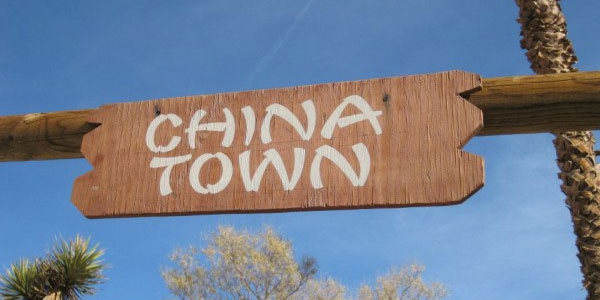
In my research of Chinese Americans in the Old American West for my Cowboy Ninja book series, I’m digging up a lot of really interesting stuff, and here’s my latest find: the ruins of Calico’s Chinatown.
Calico is a Californian silver mine ghost town, and it’s situated out between Los Angeles and Las Vegas, almost exactly at the halfway point between the two major cities, just north of where the city of Barstow is located. The town was established around 1881, and the silver mines produced about $20 million in silver over 12 years. After the mine dried up, it was abandoned. In the 1950s, Walter Knott of Knott’s Berry Farm purchased the town and restored the majority of the buildings to look the way they originally did. Then, Knott gave the town as a gift to California, and it is now a part of the San Bernardino Regional County Parks. It was officially named California’s Silver Rush Ghost town in 2005.
So guess which buildings DIDN’T get restored? Yep, you got it. The Chinatown ones. More after the jump.
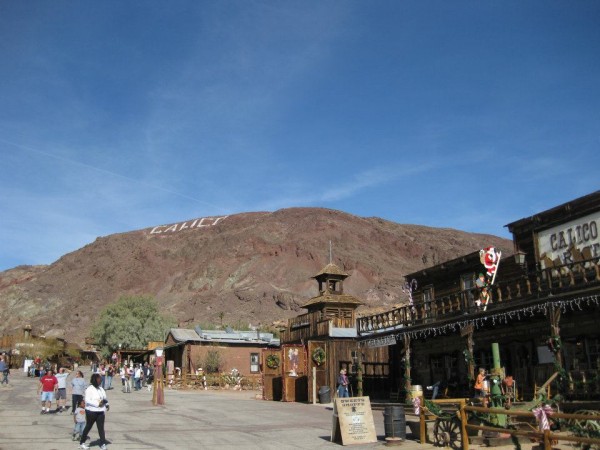
I wanted to get a feel for a real old west town for my book, or at least as real as I could get, and Calico seemed the perfect place. It was within driving distance for me, and it was an official state recognized park. What I had my fingers crossed for was some trace of Chinese American presence there. There’s no mention of it at all on Calico’s official park website, but I saw some mention of it in some online comments, so I had my hopes up.
I was definitely not disappointed. Overall, I was just having a blast drinking sarsparilla and taking a million pictures of all the fascinating historic items all over the town including a printing press, school house, and mining carts galor, and just basically American-history-geeking-out to the extreme. Everything was restored as the park website said it would be, which was helpful for me and my writing, but at the same time, I felt a little sad that I couldn’t really tell what part was the original building and what part was newly done. Needless to say, I spent extra quality time with the most decrepit parts of the buildings and displays, trying to feel the age in the remnants.
Then suddenly, I turned a corner and looked down at what was a stage area, and next to it were rows of decaying walls. It looked almost like one of those archeological excavations that you see on National Geographic or Discovery Channel when they dig up some ancient city. I was thrilled and immediately ran in amongst the tattered walls, nothing more than crumbling adobe and rocks, the outlines of windows and doors still discernible, and one unit even had a fireplace while another had stairs.
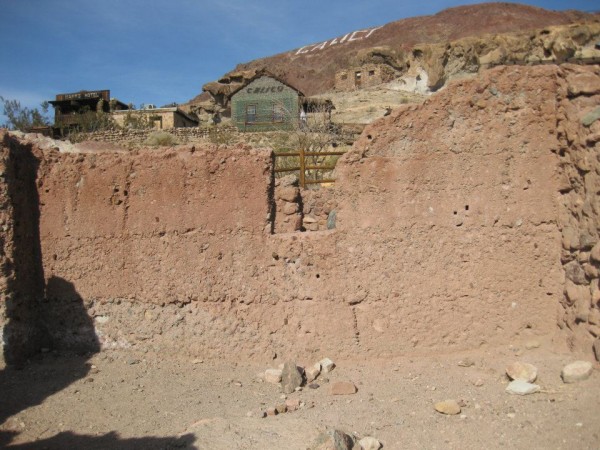
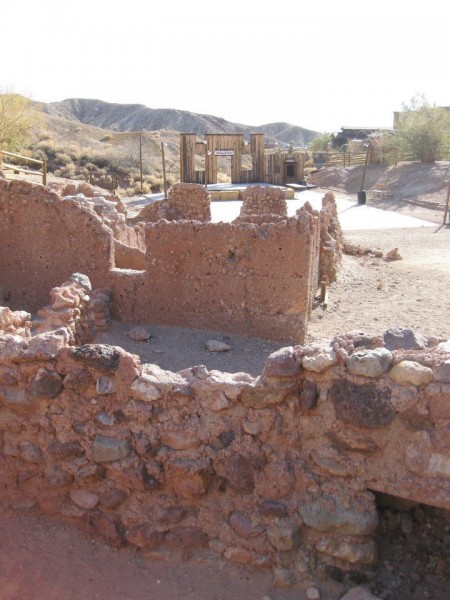
And then I saw something that I had missed in my excitement running down into the ruins–a Chinese bathhouse.
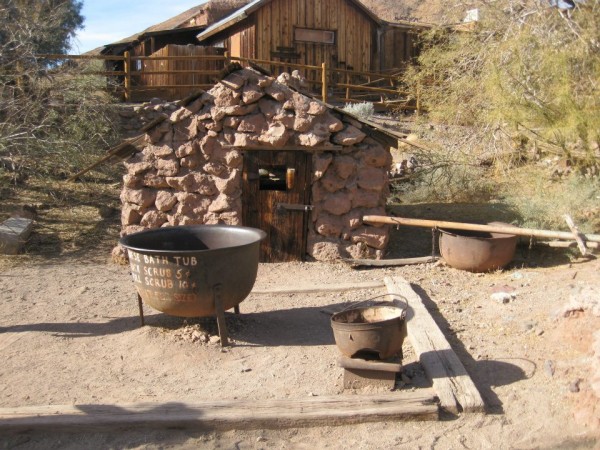
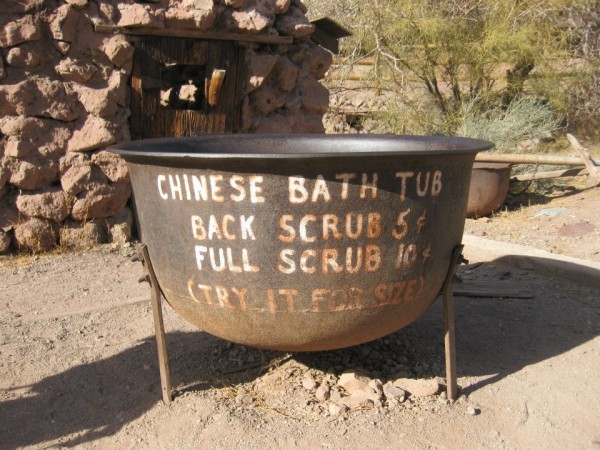
As soon as I saw that, I thought, “Was the Calico Chinatown just this one bathhouse building?” And that’s when it hit me, and I whirled around and looked back at the ruins I had been running gleefully through just a second earlier. On the wooden fencing just above and behind the ruins was a little barely noticeable sign that read “China Town”.
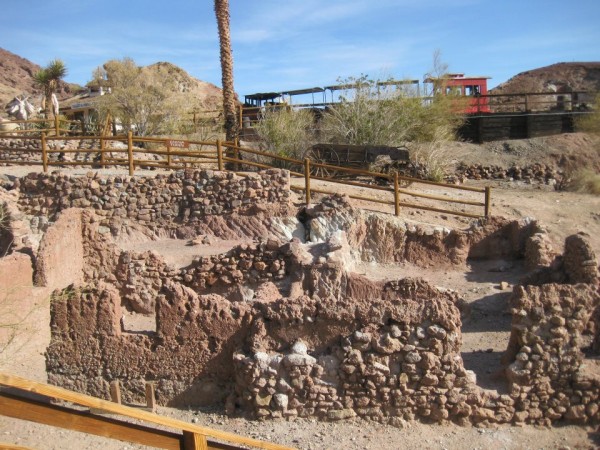
I was immediately struck by a mixture of feelings. On the one hand, I was delighted to be able to see the original walls of the buildings that were constructed here by the Chinese Americans of the 1880s and I didn’t have to guess what part was the “restored” part and what part was the original material. On the other hand, I was horrified that the buildings that were left un-restored were the Chinatown ones. To me, it spoke volumes of how the Chinese Americans are continually marginalized in the history of the Old West when they were definitely an integral part of this formative aspect of American history.
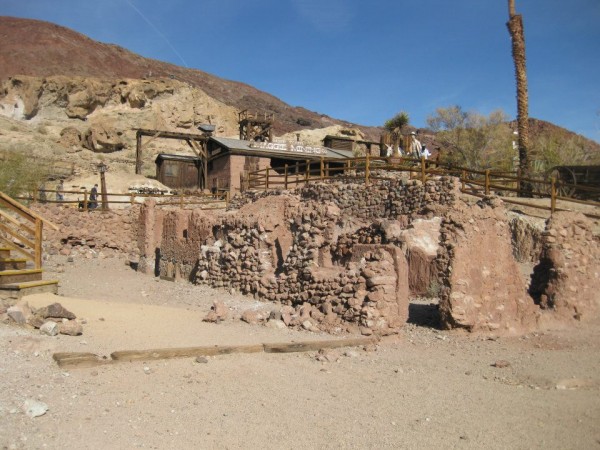
I walked back again through the ruins, more solemnly than before, and this time, I spent some moments just standing and looking out a window or crouching by the fireplace and trying hard to imagine what it must have been like for the men who lived there, so far away from family and friends, so looked down upon by their neighbors here, and at every turn in danger of being murdered or robbed with no protection under what little law of the land there was in those frontier parts. It made me sad comparing my life of luxury to theirs of misery.
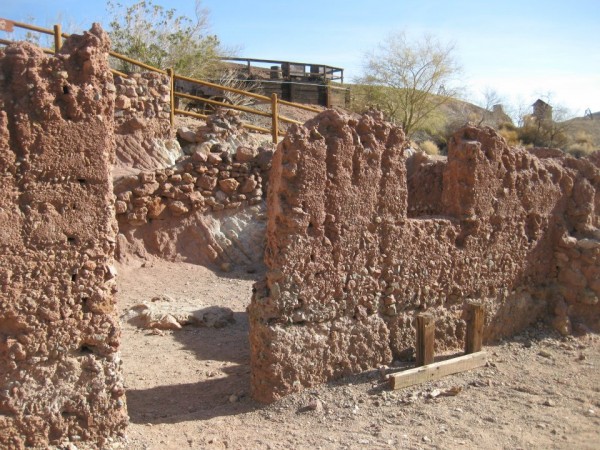
Who knows when a storm or earthquake will rage through this area and flatten what’s left of this old Chinatown of Calico, and then even these crumbling adobe walls will be gone. I couldn’t find anything online about the Calico Chinatown before I went, so I hope this article will be a resource to others seeking the same information and encourage people to visit this forgotten Chinatown and honor its memory, and maybe when they walk through Calico next, they’ll notice the little hard-to-see sign above that pile of ruined, un-restored buildings that reads “China Town.”








